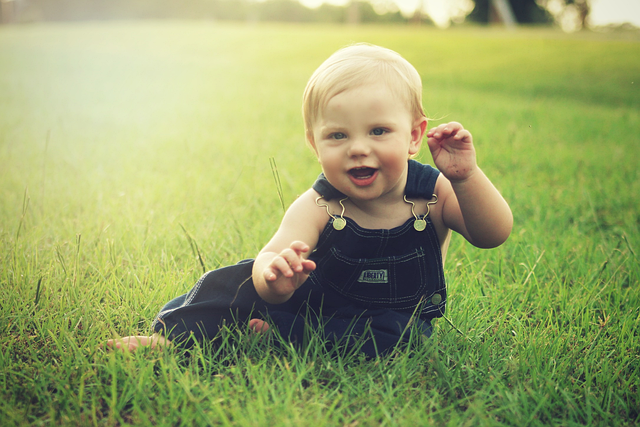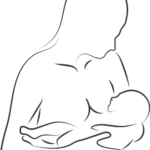Image credit to Baby Names Direct
Your 10-Month-Old Baby’s Development and Milestones Your baby is rapidly approaching its first birthday, and every day a new range of exciting developments occurs. Indeed, your 10-month-old should be working up to big developmental milestones, such as pulling up to stand, bottom shuffling, and even feeding themselves.
“Big theme this month is movement and exploring,” says Florencia Segura, MD, FAAP, a pediatrician with Einstein Pediatrics. They are crawling in one form or another. “They’re also pulling to stand near furniture, self-feeding quite well, and saying ‘mama’ and ‘dada’ with specific intent,” she adds.
Want to know what else to anticipate? Read on for 10-month-old baby development information related to milestones, baby care, sleep, nutrition, and safety advice, in addition to lots of other developmental tidbits.
10-Month-Old Baby Development
Your 10-Month-Old Baby’s Development and Milestones
The tenth month is a time when your baby gets stronger as their muscles prepare for walking. According to The American Academy of Pediatrics (AAP), many babies take their first steps about the time they are 12 months old, but there is a wide variation.
“Usually around 10 months, babes get really motile,” said Corey Fish, MD, FAAP, a pediatrician and CMO for Brave Care. “They’re crawling, pulling to stand, and cruising. I have even had kids walking at 10 months. It’s rare, but it does happen.”
Besides, the baby’s brain is continuing to act like a little sponge, absorbing information from all around. Explain, narration of events happening in your life anyway—whether you are taking your baby with you for grocery runs or demonstrating to them how to change your oil, they’ll definitely be picking up on it. Therefore, there is nothing to be ashamed of by talking to your baby, even when it is just the two of you.
You can encourage your baby’s fine and gross motor development by providing toys that help them practice those skills. Also, walk with them and hold their hands while they stand.
Development: You now have a much more ambulatory infant, who may be crawling, cruising, and pulling to a standby now (though, again, these are wide ranges). Early speakers might be able to say words like “mama” and “dada.” Ten-month-olds may point and pick things up with their thumb and forefinger.
Sleep: Infants this age sleep about 14 hours a day—11 hours at night and about 3 hours spread out in two or three daytime naps.
Food: By now your baby will most likely be a finger food pro. He may even be starting to learn to feed himself— although it tends to get pretty messy. He has probably even begun to consume most regular food. Avoid giving your 10-month-old cow’s milk and honey, and don’t give anything that may pose a choking hazard like whole grapes, hot dogs, nuts, or popcorn. Also, avoid any chunks of raw vegetables, cheese, or meat.
By 10 months of age, most will want to walk with you holding both of their hands, imitate speech sounds, and respond to the word “no.” They are also more easily able to pick up items.
“Babies this age can use their thumb and forefinger to pick up things, and everything goes in the mouth,” says Dr. Fish. “They also can clap or wave and might even say a word or two—even though they’re still babbling a lot. You also should expect them to be making eye contact as well as responding and engaging with people around them.”
Object permanence is also more developed at 10 months, says Dr. Segura. When you hide a toy or another object, they’ll know that the toy still exists. They’ll also understand that you still exist somewhere in the house when you’re not with them. When you leave the room, they may cry for you, especially because separation anxiety is prevalent at this age.
Additional Behaviors
Walks with you holding their hands
Becomes interested in and investigates everything
Knows a few one-word commands or questions
Waves “bye-bye”
Responds to optional reinforcements
Intentionally use familiar sounds and gestures
Drinks from a cup when it’s being held for her
May stand on her own unassisted (only for brief moments)
Has strong likes and dislikes for what she tastes and feels
In general, it probably means nothing to worry about as long as he/she is getting around their environment with the use of their hands. It really spells nothing to worry about if you are getting a lot of babble – even though you feel they are behind their playmates. Just remember that every baby develops at their own pace. Milestones are not a hard and fast rule but a guideline to alert you on what to expect.
“Parents tend to compare their baby to other kids,” says Dr. Fish. “I see thousands of kids and parents are often more worried than I am. Usually, if your baby is behind on one thing, they are ahead on another. There is such a wide range of norma,l and being behind on something usually has no bearing on future anything.”
A Month-by-month Guide to Your Baby’s First Words
10-Month-Old Baby Food
By 10 months, your baby has mastered finger foods. They’re also eating a wide range of flavors and textures. “Bushes can eat pretty much everything but honey and cow’s milk, assuming it’s not something they could choke on,” says Dr. Fish. “Even peanut butter and eggs are fine. The data has been clear for a long time that you want to introduce those foods as early as possible.”
Ever wondered how much your 10-month-old should be eating? The rough guideline is that by now, your baby should be having about 24 ounces of breast milk or form each day. In addition, a diet with fruits, vegetables, protein foods, and some starch is included.
Most pediatricians, for instance, Dr. Segura, will tell you to let your baby decide when they are full partially. That’s why you may wish to try baby-led weaning, in which you expose your baby to different foods rather than aim for them to eat or drink a certain amount of food.
Also, now that your baby is tolerating three meals a day, Dr. Segura says they should eat what everyone else at the table does whenever possible. “Try to have at least one meal a day as a family,” she says. “This sets a good foundation for the next several years of life.
At 10 months, the average boy will be about 21.5 pounds; most girls will have a weight of approximately 20 pounds. Boys will have a length of about 29 inches long, most girls will be around 28 inches long.
Also Read : Your 3-Week-Old Baby’s Milestones & Development
Baby Sleep: 10-Month-Old
Your 10-Month-Old Baby’s Development and Milestones
Most babies at this time take two daily naps. They need about 14 total hours of sleep—generally about 11 hours at night and three hours during the day.
Many 10-month-old babies sleep through the night, but some do not sleep all the way in one long stretch. “The vast majority of kids this age are able to sleep through the night,” according to Dr. Fish. “When kids aren’t sleeping through the night, it sometimes has to do with how the parents are reacting when their baby is waking up or there is a specific reason for the [night waking].”
An illness, teething, separation anxiety, and growth spurts all disrupt sleep. So if your baby was sleeping through the night and suddenly starts waking again, you may want to investigate what else is going on. If it continues to be a problem and you’re not sure what to do, talk to your pediatrician for advice.
10-Month-Old Baby Schedule
At 10 months your baby is getting his or her first taste of the world, experimenting with his or her action boundaries — and maybe even your own patience. It can also be a time when schedules are fairly predictable.
“Now that your baby is [napping consistently], it is much easier to have them on a schedule,” says Dr. Segura. “Some days you might get off schedule, and that is OK, but babies this age thrive on consistency.”
This way you can make the most out of the nap times for your baby. So, as the baby wakes up at least, you have the energy to attend to them. “I recommend providing a stimulating and safe environment for baby,” says Dr. Segura. “They will be able to explore more when you have at least one room that is completely child-proofed.”
Play games, have a sing-song, and bop along to the tunes, she says. You also should have a nighttime routine, if you don’t have one already, and aim to read at least one book a day—possibly more if your schedule allows. Reading has plenty of cognitive and social-emotional benefits for kids.
10-Month-Old Baby Health and Safety_END not_needed
Your 10-Month-Old Baby’s Development and Milestones
Your 10-month-old is suddenly much more mobile, so babyproofing is more crucial than ever. “That’s also the age when they really find trouble around every corner,” Dr. Fish adds. “Medicine bottles that truly are supposed to be childproof often aren’t totally childproof.”
Dr. Fish also recommends caution when it comes to standing bodies of water. To a baby, even a kiddie pool, a filled mop bucket, dog bowls, opened toilet, and so on can present a drowning hazard. Also, if you run a bath and leave it unattended while it’s filling up, your baby could potentially climb in. You should stay in the bathroom while the water is running and empty it as soon as you’re finished.
You should also read the installation manual that came with your baby’s car seat to ensure the baby is not too long or too heavy for the seat, especially if you are still using an infant carrier. “I always advise parents to look for the best car seat you can find that goes backward and forward and has the highest possible weight limit,” says Dr. Fish.
10-Month-Old Baby Care Basics
Another fun and vital way to nurture your 10-month-old baby is through play. According to the AAP, play improves social skills, executive functioning, peer relations, language, early math skills, and many more benefits.
At the 10-month mark, your baby is most likely due for a first or second cold, especially if he’s recently started daycare. When your little one is unwell, be vigilant with their actions and state of being. Warning signs such as lethargy, extreme fussiness, stiff neck, difficulty in breathing, signs of dehydration, or pain require an immediate visit to the doctor. If your baby’s temperature does not reduce after administering the medication or persists for more than 24 hours, take them to the doctor.
Other Things Your 10-Month-Old Should Be Up To
Your 10-Month-Old Baby’s Development and Milestones
At around 10 months, most parents are asking themselves when their baby will walk. The AAP states that this usually happens around his or her first birthday. Though of course, there’s a wide range of normal.
So even if you are worried that your baby isn’t showing many signs of walking, do not resort to pushing your child before they’re ready. Every baby is different, and some simply have less interest in walking right now. Rest assured it will happen in time.










